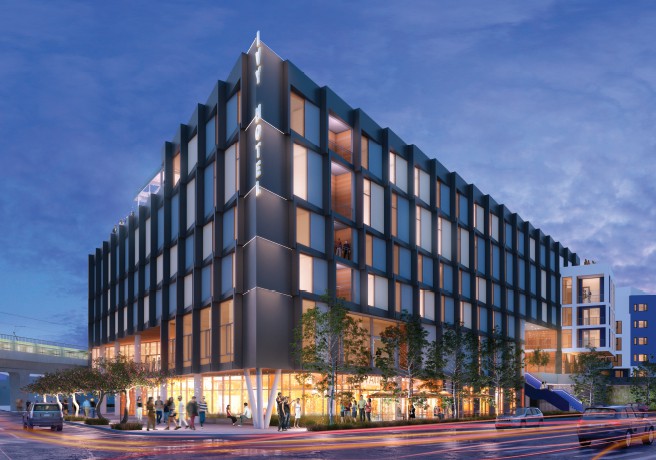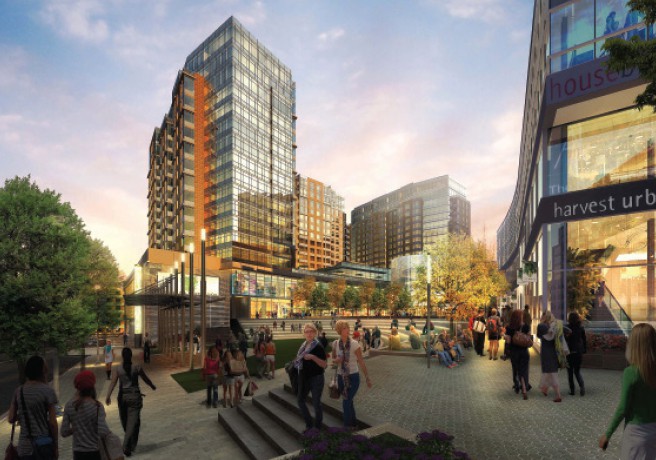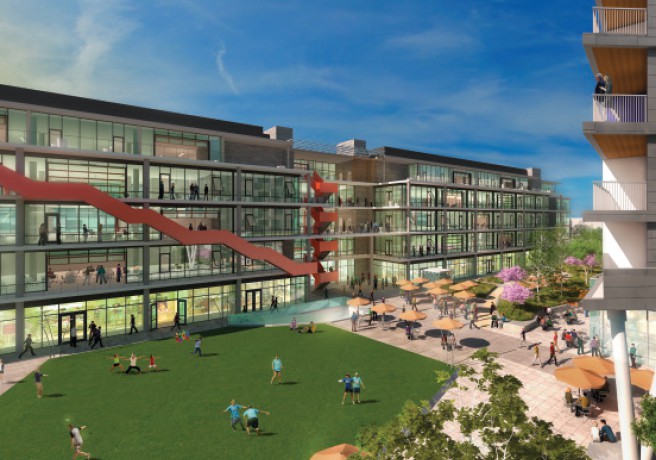Unlocking the value
Development around transportation hubs is being used by cities to generate long-term revenue streams and fund infrastructure improvements. Successful and innovative projects are delivering benefits to communities and attractive returns to developers and investors. The key to unlocking this value is in structuring deals that create viable investment opportunities with public value capture says Ali Abbas of AECOM Capital
In recent years a number of transit-oriented development neighborhoods have demonstrated an impressive ability to deliver a broad range of economic, social and environmental benefits. This model is particularly pertinent now as cities compete to attract talent and search for drivers of sustainable growth at the same time that developers look for neighborhoods where they can deliver projects that appeal to Millennials seeking an urban live-work-play lifestyle.
Time and time again, we have seen that when zoning is integrated with transport infrastructure and surrounding communities, not only does it create enhanced opportunities for place making, but it also acts as a catalyst for wider regeneration. The improved connectivity and new zoning boost an area’s desirability and convenience, enhancing its property values.

As values rise, this uplift provides cities with opportunities to capitalize their public land and implement mechanisms of public value capture. By identifying and collecting a portion of the value created, such mechanisms have the ability to generate long-term revenues, finance much-needed infrastructure improvements and deliver urban amenities and affordable housing.
Of course the improved connectivity and zoning also plays a significant role in creating attractive opportunities for developers and investors who increasingly look for projects that cater to the preferences of a transforming workforce. Dense urban neighborhoods connected to transit provide the opportunities to deliver projects with an innovative mix of uses and amenities at attractive land basis in sub-markets with robust growth and high barriers to entry.
Balancing the benefits
At the heart of creating successful transit-oriented projects with public value capture is a collaborative process that achieves a balance between public and private interests. The goal is to deliver benefits to cities and returns to investors. Increasingly we are seeing innovative joint ventures involved throughout the entire asset lifecycle with integrated planning, building, financing and operating capabilities.
These integrated partnerships are formed to address the multifaceted nature of projects by providing investment capital, credit enhancement, and development and construction expertise. Such capabilities help to accurately value and underwrite risks by developing projects beyond the initial concept so that they can be efficiently structured, financed, built and exited.
This new integrated approach requires a vision resulting in a development framework that provides planning certainty with flexibility to respond to changing market conditions. While public benefits and incentives should be established early, the mechanisms of public value capture can be diversified and distributed over time to allow for a negotiated approach around specific deals.
Each investment opportunity requires extensive design development and costing to be fully underwritten based on an understanding of risks and availability of financing. A collaborative approach early on is required to maximize value and reduce delivery risk so that land can be accurately priced based on return estimates to the public and private sectors.
Integrated partnerships are increasingly used to develop transit-oriented development projects. Such partnerships balance risks and rewards to the public and private sectors to determine the extent of the value likely to be created and the deal structure able to unlock it so that cities and developers can shape and deliver the ambitions to anchor communities and transform neighborhoods.
About AECOM Capital
AECOM Capital is the investment arm of AECOM. It works with institutional investors and experienced developers to invest in gateway cities. Since 2013, it has invested in approximately $5 billion (10 million square feet) of transit-oriented ground-up real estate development and value-add projects.
1. Flushing Commons, NYC

On the doorstep of the third busiest stop on the MTA subway system and Long Island Rail Road train station, the Flushing Commons development in Queens, New York City, is transforming a 5.5-acre former municipal parking lot. Being developed in two phases in consultation with the New York City Economic Development Corporation, the project will comprise more than 600 apartments, and 450,000 square feet of office and retail space.
The site is part of the Downtown Flushing Queens Development Framework which is aimed at positioning Flushing as a center of urban activity. The site was sold with the requirement that the developer deliver several public amenities including a 1.5-acre landscaped, open-air plaza and a 62,000-square foot YMCA recreation center.
Flushing Commons Phase 1 involves a partnership between F&T Group, The Rockefeller Group, and AECOM Capital as co-developers along with Fortress Investment Group (Limited Partner). AECOM Tishman is the general contractor.
2. Ivy Station, Los Angeles

Adjacent to the terminus of the Metro Expo Line of Culver City in Los Angeles, easy connections from this development spread far and wide from Hollywood to Long Beach and Pasadena. Journey times to Downtown LA are just over 30 minutes. Ivy Station is a 500,000 square feet mixed-use development expected to include high-quality, state-of-the-art offices, with apartments, a hotel, retail stores and restaurants.
The site was formerly owned by a state redevelopment agency and was sold subject to the city’s guidelines to include a transit-oriented, mixed-use development surrounding a large central open space connected to the new station and the emerging Washington National Transit Oriented Development District with public plazas, outdoor dining and a strong retail edge to encourage pedestrian activity.
The scheme is by Lowe Enterprises in partnership with AECOM Capital.






